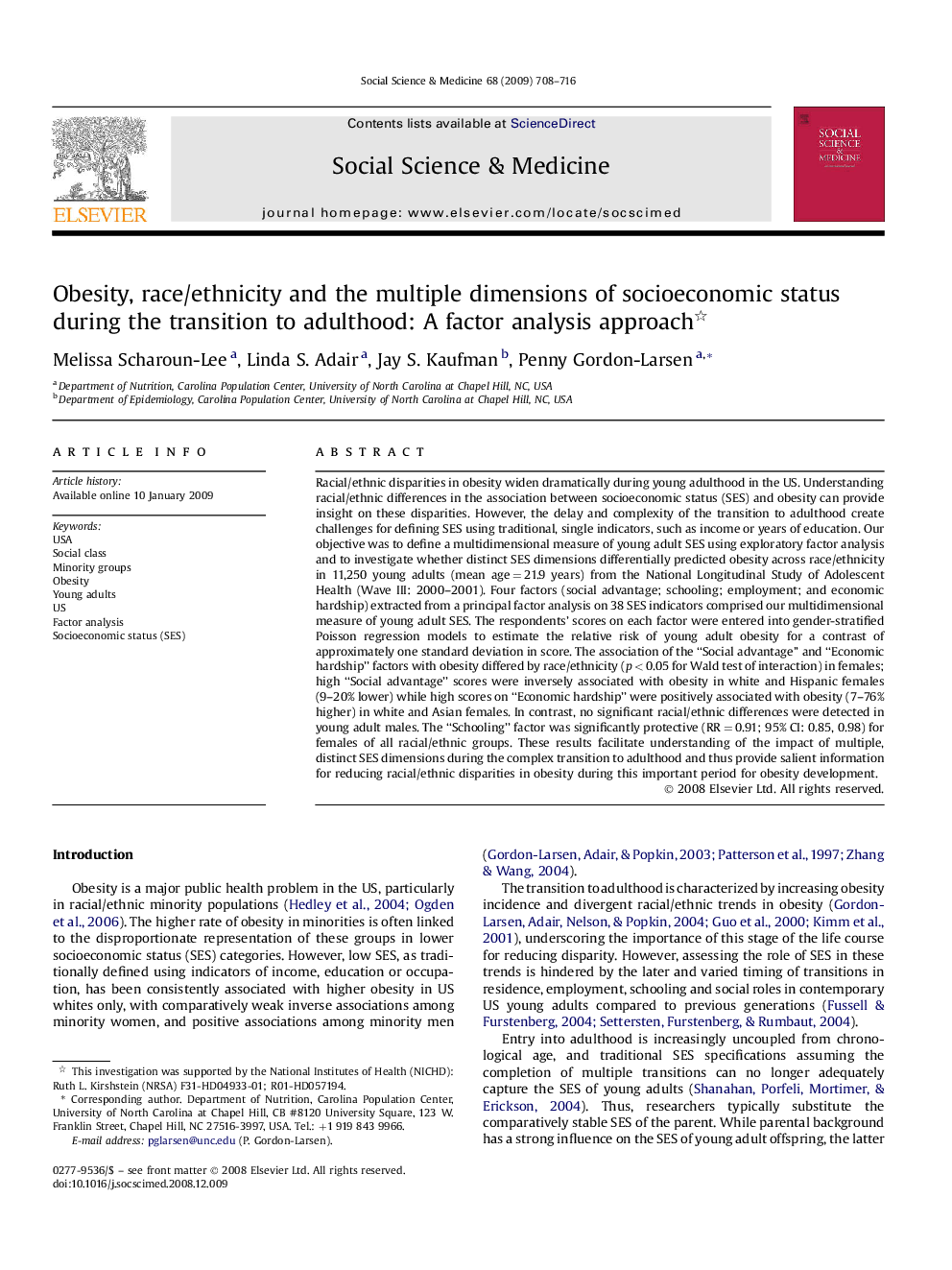| کد مقاله | کد نشریه | سال انتشار | مقاله انگلیسی | نسخه تمام متن |
|---|---|---|---|---|
| 953940 | 927612 | 2009 | 9 صفحه PDF | دانلود رایگان |

Racial/ethnic disparities in obesity widen dramatically during young adulthood in the US. Understanding racial/ethnic differences in the association between socioeconomic status (SES) and obesity can provide insight on these disparities. However, the delay and complexity of the transition to adulthood create challenges for defining SES using traditional, single indicators, such as income or years of education. Our objective was to define a multidimensional measure of young adult SES using exploratory factor analysis and to investigate whether distinct SES dimensions differentially predicted obesity across race/ethnicity in 11,250 young adults (mean age = 21.9 years) from the National Longitudinal Study of Adolescent Health (Wave III: 2000–2001). Four factors (social advantage; schooling; employment; and economic hardship) extracted from a principal factor analysis on 38 SES indicators comprised our multidimensional measure of young adult SES. The respondents' scores on each factor were entered into gender-stratified Poisson regression models to estimate the relative risk of young adult obesity for a contrast of approximately one standard deviation in score. The association of the “Social advantage” and “Economic hardship” factors with obesity differed by race/ethnicity (p < 0.05 for Wald test of interaction) in females; high “Social advantage” scores were inversely associated with obesity in white and Hispanic females (9–20% lower) while high scores on “Economic hardship” were positively associated with obesity (7–76% higher) in white and Asian females. In contrast, no significant racial/ethnic differences were detected in young adult males. The “Schooling” factor was significantly protective (RR = 0.91; 95% CI: 0.85, 0.98) for females of all racial/ethnic groups. These results facilitate understanding of the impact of multiple, distinct SES dimensions during the complex transition to adulthood and thus provide salient information for reducing racial/ethnic disparities in obesity during this important period for obesity development.
Journal: Social Science & Medicine - Volume 68, Issue 4, February 2009, Pages 708–716